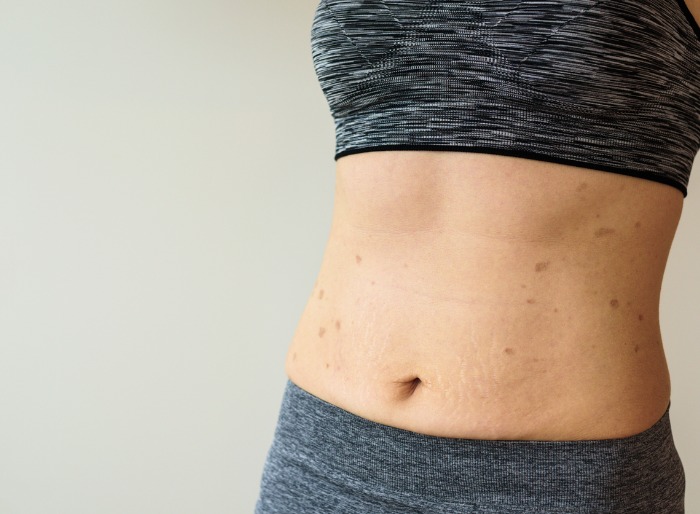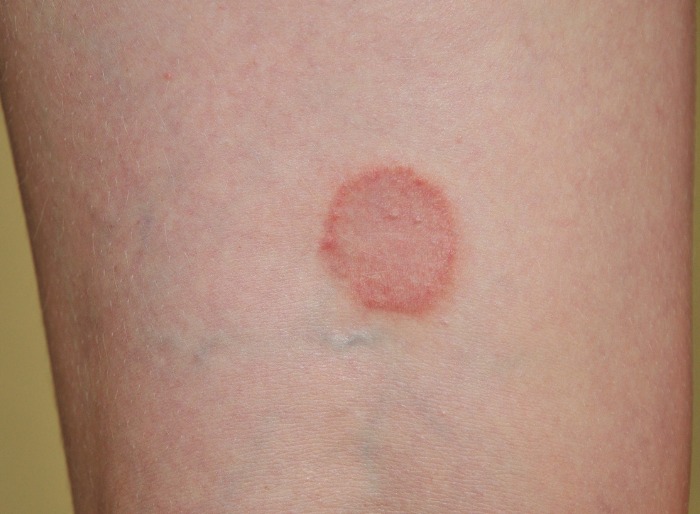If you are experiencing itchy red or purplish bumps on your skin or white bumps in your mouth, you may have lichen planus (LIE-kun PLAY-nus). Lichen planus is a common, non-contagious skin disease easily treated when properly diagnosed. Our medical dermatologists have experience with an array of skin conditions, and we can diagnose your symptoms with compassion in a state-of-the-art facility. Contact Dermatology Associates today to schedule a lichen planus treatment appointment.

What Is Lichen Planus?
Lichen planus is a common disease that can cause swelling and irritation in the skin, nails, hair, and mucous membranes. On the skin, this condition often appears as a rash that is usually itchy and can develop over several weeks. Areas covered by a mucous membrane, such as the mouth and vagina, can form white, lacey patches. The condition is not contagious, however, hepatitis C, which can cause this condition, is contagious. Lichen planus is not curable but may go away on its own in time and can be managed with proper diagnosis and treatment.
Types Of Lichen Planus
Lichen planus can occur on different areas of the body and cause different symptoms depending on where it manifests, which includes the following areas of the body.
- Classic Lichen Planus. This type of lichen planus can appear all over the body, but most commonly shows up on the wrists, arms, back, and ankles. They appear as purplish or red flat, shiny bumps, and may be very itchy. The bumps may also have fine, lacey white lines.
- Nail Lichen Planus. This type of lichen planus can cause the nails to thin, scar, and may even cause complete nail loss.
- Oral & Vaginal Lichen Planus. This type of lichen planus occurs on the moist areas of the mouth and vagina, causing inflammation and peeling of layers that then become raw and painful open sores. If a woman has oral lichen, she may also have vaginal lichen almost half of the time.
- Penile Lichen Planus. Penile lichen planus usually resembles classic lichen planus, but severe cases can cause sores and scarring.
- Lichen Planus Pigmentosus. This type of lichen planus occurs in people of color from the Indian subcontinent, Central America, and the Middle East primarily. It can be triggered by sunlight, usually does not itch, and mostly turns the skin gray.
- Lichen Planopilaris. Lichen planus on the scalp where the hair follicles are attacked, leading to scarring and permanent hair loss. It may appear in the center of the scalp, front hairline, or even the eyebrows. It may be itchy or cause burning or may cause no symptoms.
Lichen Planus Symptoms
Symptoms of lichen planus vary depending on what area of your body is affected. If you notice any of the following signs or any rash of unknown origin on any part of your body, you should contact your doctor for an appointment.
- Skin: Just a few or several purplish or red shiny, firm bumps. The bumps are often itchy and may have fine white lines or scales. They can appear anywhere on the body but often show up on the wrists, arms, back, and ankles. In people of color, the areas are not usually itchy and may turn the skin gray.
- Mouth: Lacy patches of white dots inside of the mouth, including the tongue and cheeks. In severe cases, redness and sores may also develop.
- Nails: Thinning or ridged nails on the toes or fingers. Nail splitting and nail loss may also occur.
- Scalp: Itchy, irritated red spots or tiny bumps on the scalp, hairline, or eyebrows. The hair may also begin to thin or completely fall out in these areas.
- Genitals: Bright red sores that are painful and may itch.
Lichen Planus Causes
The causes of lichen planus are varied and not fully understood. However, it’s important to understand lichen planus is not a type of cancer nor is it contagious. Lichen planus may be caused by the body’s immune response due to a disease or a reaction to a medicine or medical condition. When the body’s immune system is triggered, it can attack parts of the body as if it was a foreign object, which can lead to lichen planus. There is also a possible link between lichen planus and hepatitis C as many people who have the virus also have lichen planus. No matter the cause, our Gainesville dermatologists can help you better understand and treat your disease.
Lichen Planus Treatment
Most cases of lichen planus go away on their own within two years of emergence. However, symptoms can be inconvenient and cause pain. While there is no cure for lichen planus, dermatological treatments can help relieve symptoms and can help speed up the healing process. Possible treatments include the following.
- Oral antihistamines pills to alleviate itching
- Topical corticosteroid cream or ointment to reduce redness and swelling
- Oral corticosteroid pills or shots to relieve painful sores or to reduce bumps when a patient has several or symptoms that have lasted longer than usual
- PUVA light therapy to help clear the skin of bumps
- Retinoic acid given as an oral pill or topical cream to help clear the skin of bumps
- Tacrolimus ointment or pimecrolimus cream to help clear the skin of bumps

Your dermatologist in Gainesville, FL, can help you determine which treatment or treatments are best for you. If you are not experiencing, burning, itching, or pain, treatment may not be necessary at all. Most cases of lichen planus clear up on their own within two to four years, though some cases may last longer and about one in five people may experience a second outbreak later. Because lichen planus is harder to treat in the mouth, oral outbreaks may last longer. In addition to medical treatments, there are some things you can do on your own to support the healing process, including the following.
- Prevent additional injuries to the skin.
- Do not scratch! Instead, apply cool compresses to affected areas.
- Work on stress management techniques while actively limiting stress triggers in your life.
- For oral lichen planus, be sure to properly brush, floss, and schedule regular check-ups with your dentist. You should also avoid alcohol and any foods that may irritate your mouth, such as oranges, tomato-based pasta sauces, or colas. You should also stop smoking.
As lichen planus heals, it can leave dark spots on the skin. These can be treated with creams, laser or light treatments, or other cosmetic dermatology treatments. Contact our dermatology associates today to learn more!